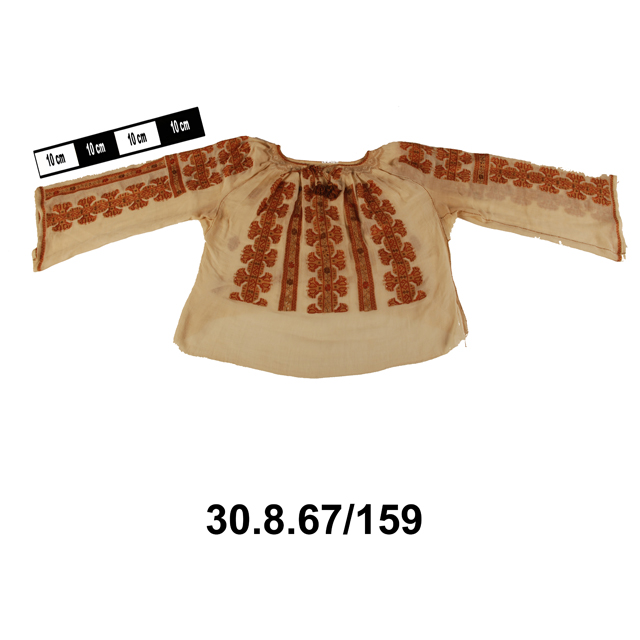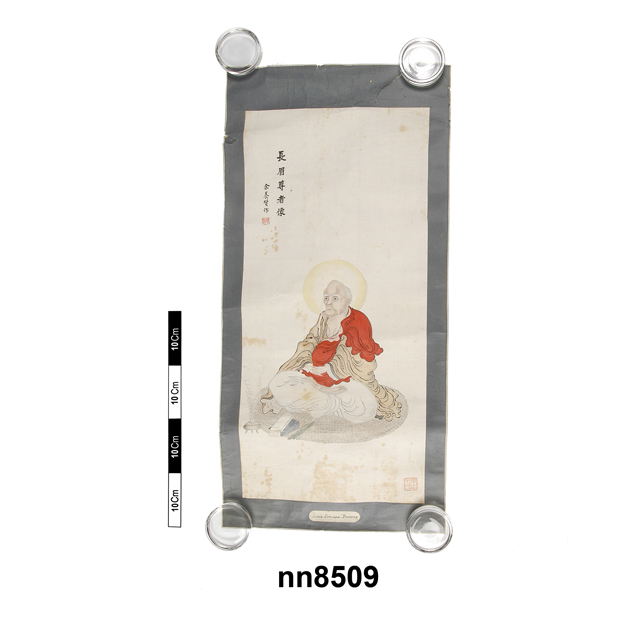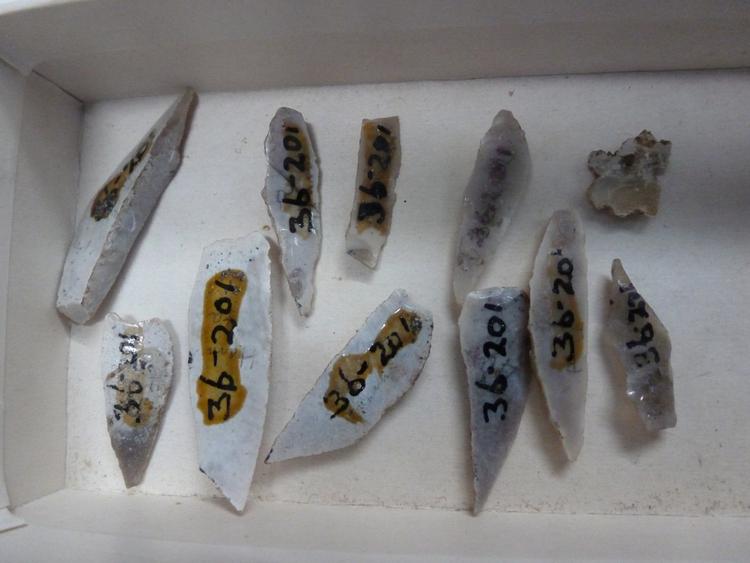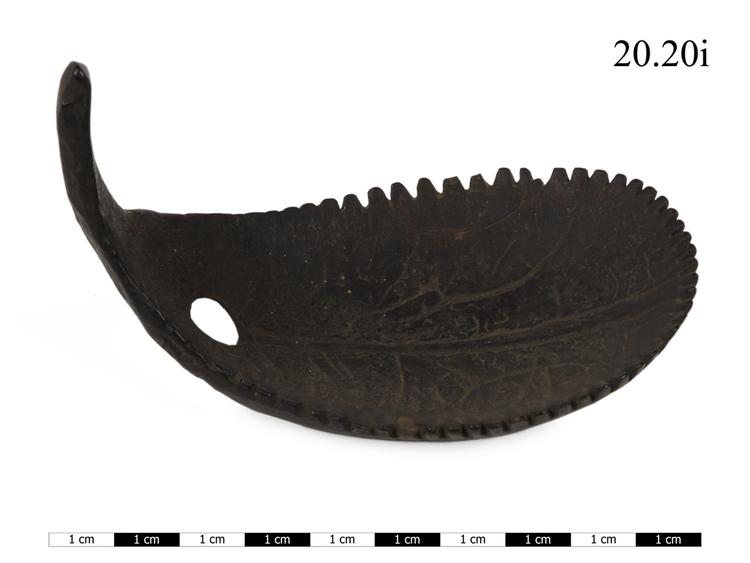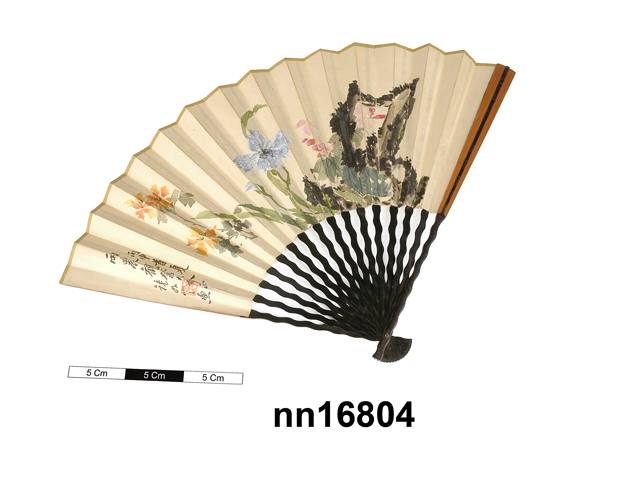
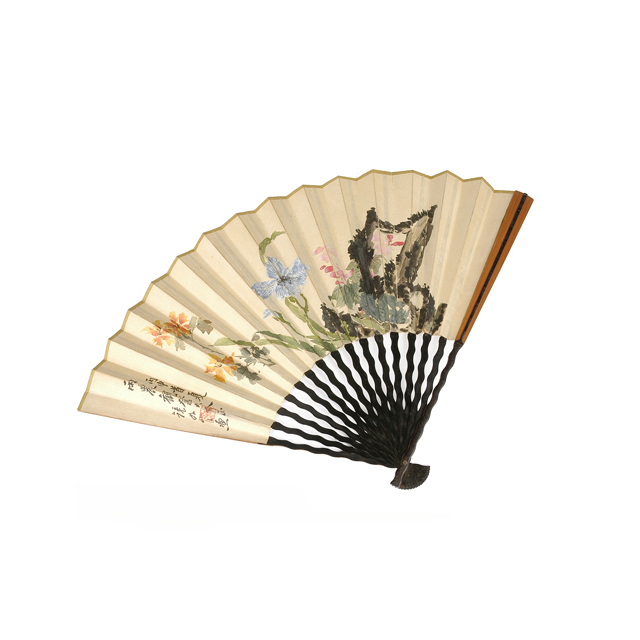



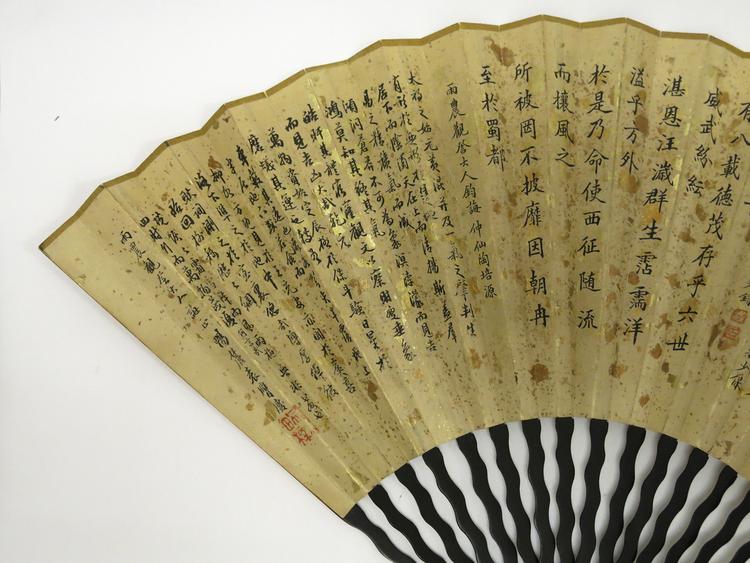
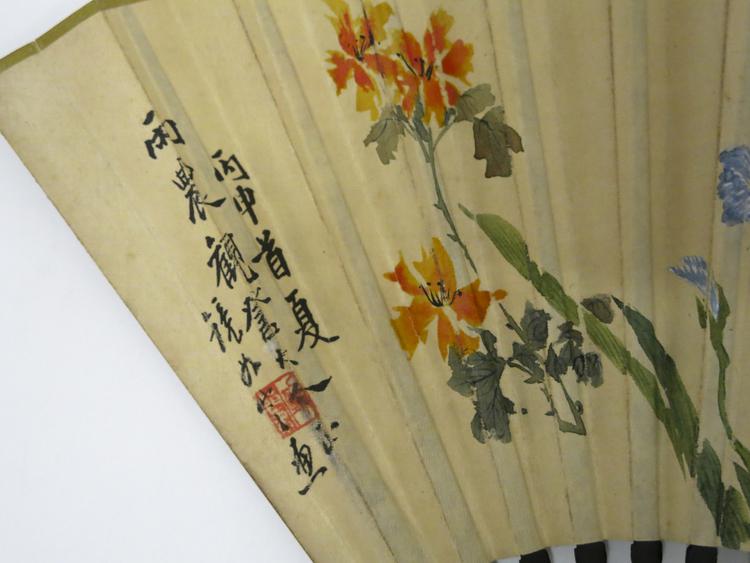
Folding fan with bamboo guards mounted with ebony, undulating ebony slats, metal rivet and double paper leaf. On the obverse, the leaf is painted in water colours with flowers. The reverse features Chinese inscriptions on gold-flecked paper. According to the words on the fan, this was a gift to a civil official in the late Qing dynasty whose name (or possibly his style name, also known as courtesy name) was雨農 ‘Yu Nong’. It was given by three other men who each inscribed words from classics on the reverse. On the obverse, the fan is dated on the left as summertime in either 1836 or 1896. The date is actually written in the system of the ten Celestial or Heavenly Stems which follows a 60-year calendrical cycle. Therefore, the year 丙申 ‘bing shen’ could be either 1836 or 1896 in the late Qing dynasty. On the reverse, the right columns are probably part of an old Chinese classic text. They were inscribed by a man called 任楚鈞 ‘Ren Chu-Jun’. The columns in the centre come from the first sentence of a 5th-century Chinese work called "Refuting the Elders of Shu" (in Chinese: 難蜀父老 ‘Nan Shu Fulao’). The original author, Sima Xiangru (in Chinese: 司馬相如; ca. 179-117 BC), was an ancient Chinese poet, writer, musician, and official who lived during the Western Han Dynasty. This column was inscribed by陶培源 ‘Tao Pei-Yuan’ who styled himself as 仲仙 ‘Zhong Xian’. The columns on the left are taken from another Chinese work in the Song dynasty called “Commented rhapsodies on categorized matters” (in Chinese: 事類賦 ‘Shi Lei Fu’). This was an encyclopaedia compiled and annotated by the Song period (960-1279) scholar ‘Wu Shu’ (in Chinese: 吳淑). This column was inscribed by袁膺慶 ‘Yuan Ying-Cing’.



